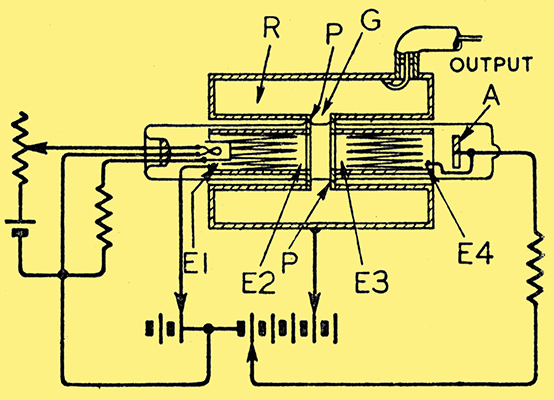|
Relates to discharge tubes of the kind in which an electron stream is first passed through a hollow resonator, where it is 'bunched' by the action of the alternating fields inside the resonator. The stream can then deliver energy to a similar resonant system provided its passage through that system is suitably phased.
The efficiency with which such devices can be used to generate or amplify oscillations of ultra-high frequency is limited by the strength of the electron stream, and by the intensity of the alternating fields set up inside the resonating electrodes.

Electron Oscillator.
The figure shows an arrangement in which the electron stream is forced to oscillate to and fro across the gap G of the resonator R, somewhat in the manner of a Barkhausen-Kurz oscillator, instead of passing straight through as usual. This expedient is used to increase the overall efficiency.
The resonator R carries a higher positive potential than the anode A, which serves to collect only the more highly accelerated electrons. The approach electrodes E1, E2 and E3, E4 are made of two interleaved parts, as indicated by the zig-zag lines, which carry different positive potentials and are insulated from each other. The relative areas exposed to the stream are those required to create such at potential gradient along the length of the tube as will ensure that most of the electrons oscillate to and fro across the gap G until they have delivered up all their available energy, whereupon they are deposited on the periphery of the rings P, forming the edges of the gap.
Standard Telephones and Cables, Ltd. (Assignees of J A Morton). Convention date (USA) July 5th, 1940. No. 553866.
|